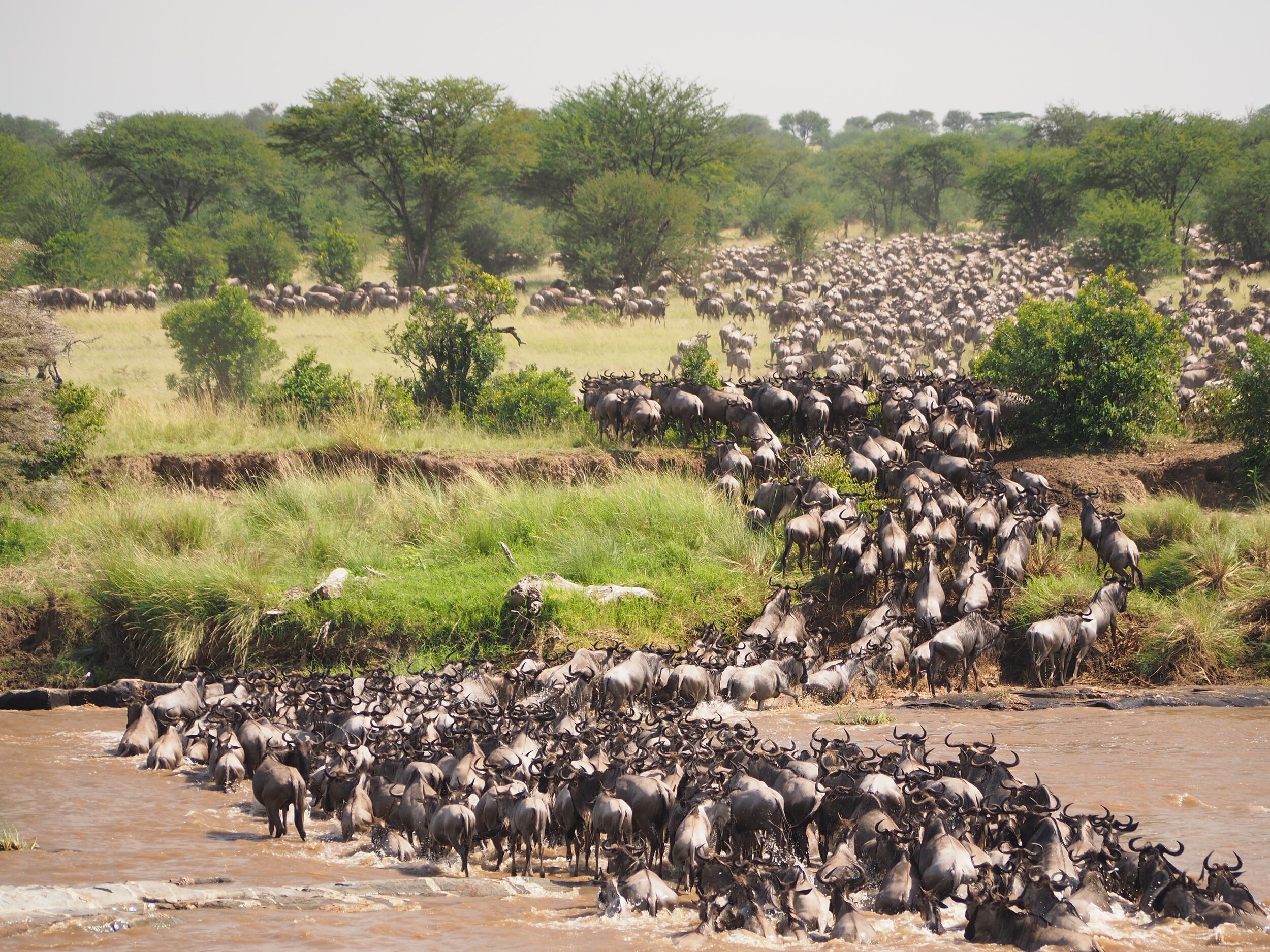Mapping the Wildebeest Migration
The largest mammal migration in the world.
Witness massive game herds and the predators that follow them.
The Great Migration is an annual event, an endless march of life, birth and death for millions of animals. It is known as one of the Seven Wonders of the Natural World. Each year, nearly two million wildebeest, zebra, and other antelope gather their young, and trek north from Tanzania's Southern Serengeti ecosystem to Kenya's Maasai Mara National Reserve. They search for greener pastures, following the rainfall. The Great Migration is a unique happening as no other migrations feature such a high number of wildlife, except perhaps butterflies and smaller birds.
The journey is a clockwise circle, spanning two countries and covering 1800 miles / 2900 kilometers. Peak migration seasons range from January through March, when larger herds congregate and give birth in Tanzania’s Southern Serengeti, and again from July through October, when herds cross back and forth across the Mara River.
Predators such as lions, leopards, cheetahs, hyenas, and wild dogs follow the herds in anticipation of easy kills, offering excellent opportunities to catch these hunters in action. River crossings are particularly filled with peril as herds gather in the thousands to ford the Grumeti and Mara rivers, with strong currents and lurking crocodiles lying in wait. Viewing kills and hordes of panicking animals may be stressful to some, but offer extremely dramatic encounters and photographic opportunities.
The migration, either in its entirety or in smaller groups, can be seen in Tanzania during all times of the year.




